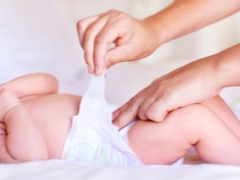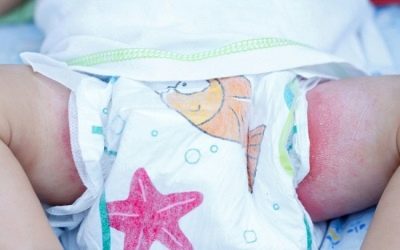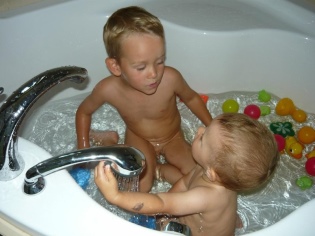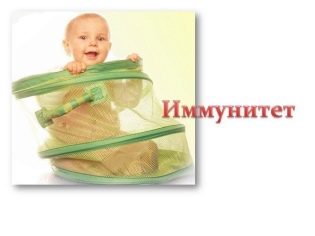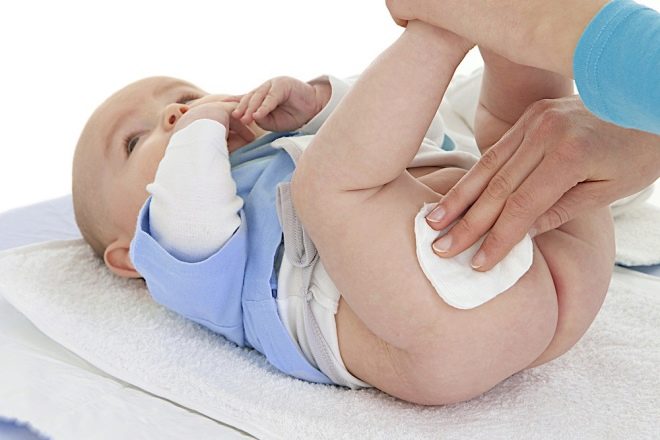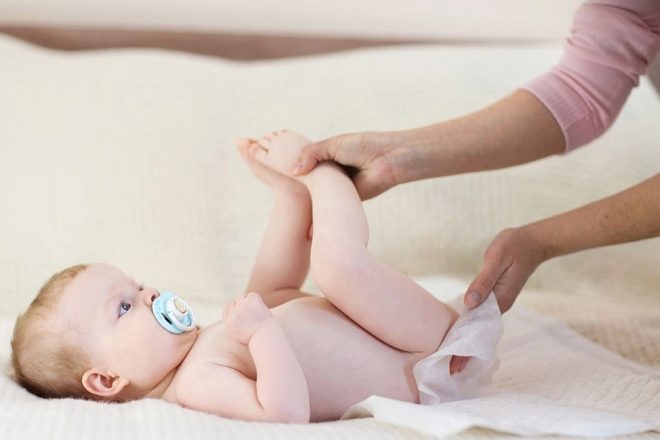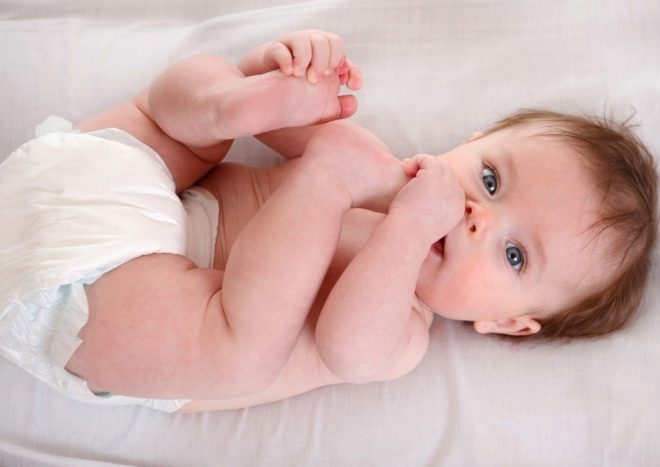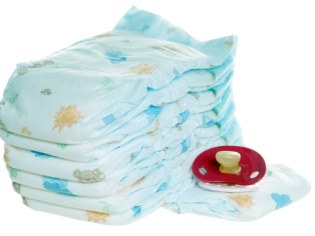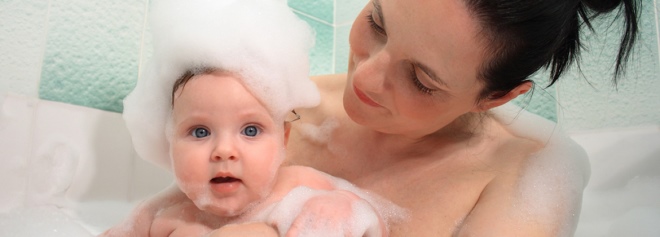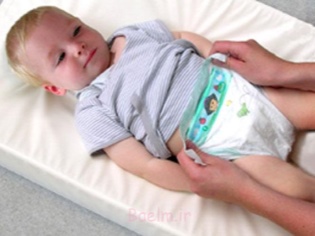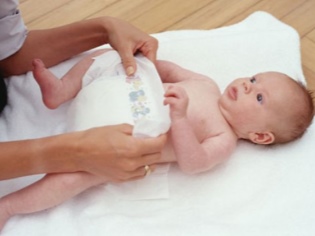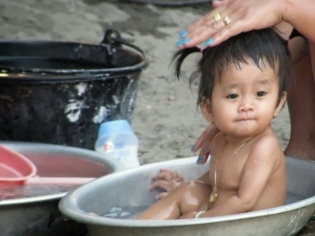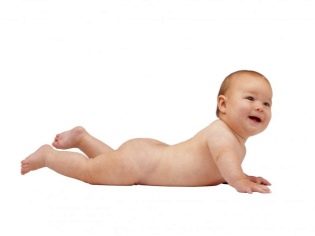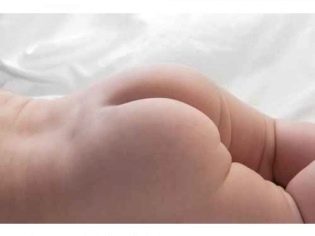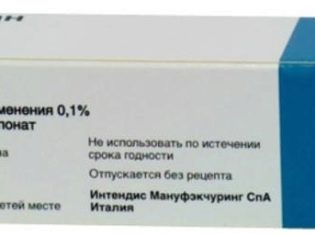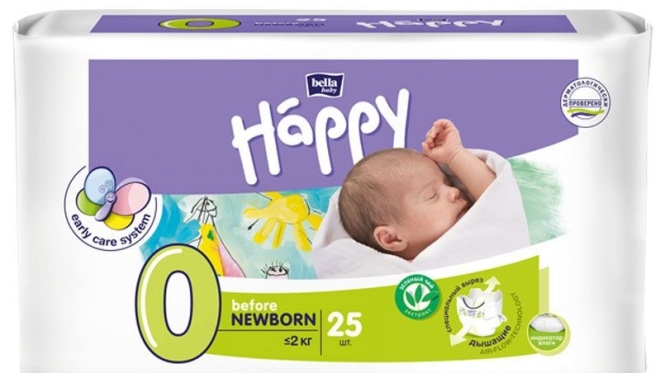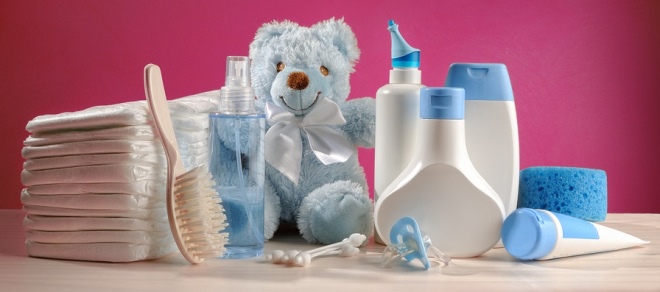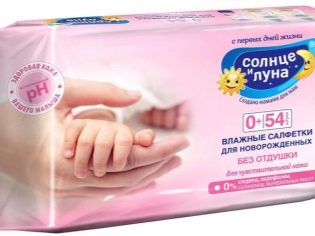Symptoms and treatment of diaper dermatitis in children
Adults often look with envy at the soft, velvety baby skin, so thin and soft that you feel like touching it with your cheek. However, this refinement and tenderness need enhanced protection. Otherwise, the baby's pop instantly “blooms” and begins to give him a lot of unpleasant sensations. What is diaper dermatitis and how to deal with it, you will learn from this article.
What it is
Diaper dermatitis is an inflammatory process on the skin, a localized advantage in the most piquant places - in the perineum, in the sacrum, in the tender thigh and gluteal folds, in the inguinal folds of the skin. Inflammation is quite worried about the child and his parents. The rash can be insignificant and quite extensive, have the appearance of separate lesions or merge into one large eczema, it can be both dry and weeping.
To combat this phenomenon, which affects six out of ten Russian babies, and in violation of the hygienic rules of care and all ten, mankind invented disposable diapers, however, this only slightly reduced the number of skin diseases.
Diaper dermatitis remains one of the most frequent complaints from parents to pediatricians.
Why does it occur?
The problem has two main reasons: external stimuli and internal factors. In practice, there is always a combination of both.
Internal causes
In newborns, the skin is very thin, not having such a developed degree of protection as the skin of adults. It is particularly sensitive to any effects - temperature, humidity, the presence of pathogenic microorganisms. It absorbs moisture faster, soaks, pores expand. This feature of the structure of the dermis is characteristic of children up to one and a half to two years. Then the skin becomes more dense and less susceptible to inflammation.
Most susceptible to diaper dermatitis are children who have problems with the balance of beneficial and conditionally pathogenic bacteria. Such conditions sometimes occur due to prolonged use of antibiotics. After immunity, babies with reduced immunity are also more susceptible to negative local effects on the skin. Children who are genetically predisposed to allergies in general and skin manifestations in particular, often suffer from diaper dermatitis.
External causes
External stimuli are well known and obvious - it is feces and urine. Diaper dermatitis always occurs due to the fact that the skin of the baby is in contact with ammonia, which is contained in the urine, with urea. But the most dangerous combination of urine and feces, because in this case, the skin is not only injured by the aggressive environment of urine, but also infected with opportunistic microbes that leave the intestines along with feces. Inflammation develops in conditions of lack of air flow, which is created under a diaper or a wet diaper. In such a space, bacteria are much easier to reproduce.
The most aggressive is concentrated urine. Such it becomes during periods of fluid loss by the body.
If the child is sick, he has a fever, if he sweats, then less urine is excreted. The less urine, the more concentrated it is.
Another external reason is the mechanical friction of the diaper. Irritations from diapers are quite painful, especially at times when urine or feces falls on them.Fecal masses themselves can change the acidity depending on the nutrition of the child and even without urine can cause quite serious skin lesions. Often, diaper dermatitis affects children of the second half of the year, since the complementary food that mother introduces from about 6 months, significantly changes the composition of the intestinal contents, the acidity increases, and the composition of urine by eating not only breast milk, but also juices, changes significantly.
Auxiliary factors
A poor-quality diaper, which retains moisture poorly, often causes dermatitis in the intimate area than a good diaper, which separates the liquid from feces and is soaked with a softening balm. But even a great and expensive diaper will not save the child from the inflammatory process, if parents rarely change it, allow overflow, and also wipe the child when changing the diaper, and not wash it.
Hygiene violation - The most frequent auxiliary factor, against the background of which inflammatory processes develop under the diaper. Moreover, violations include not only insufficient water procedures, but also excessive washing, especially if parents use soap for this each time. Soap dries the skin, makes it more fragile and vulnerable, it is easier to form microcracks, in which disease-causing bacteria reproduce perfectly.
Soap is enough to use only when the kid crap one's pants. If there was no bowel movement, you can simply wash the baby with plain water. Overheating also affects the appearance of inflammation. If in the room - tropical heat, then the baby perspires. Under the diaper, the temperature is higher than outside it, respectively, not only urine and feces, but salty sweat also affect the skin.
Symptoms and signs
Moms can easily identify the first symptoms of diaper dermatitis, without any special knowledge in the field of medicine:
- The skin of the child reddens and visually swells. The lesion can be reddish or deep red, slightly swollen. Inflammation has no clear delineated boundaries, it is blurred.
- Outside of the diaper skin remains clean and healthy.
- Puffiness is unevenly distributed. Where there was closest contact with urine or feces - hyperemia is more pronounced. Nearby there can be “islands” of perfectly healthy fair skin, alternating with other inflamed fragments.
- Inflammation changes all the time. If in the morning the fragments of redness and puffiness looked in a certain way, then by lunchtime they may merge, decrease or increase, change the place of dislocation.
- "Fresh" inflammations are characterized by the appearance of a small, weeping rash. Older foci of inflammation dry up, scaly.
Dermatitis, which has been joined by a bacterial or fungal infection, looks more “picturesque”. In addition to all the above signs, the lesions are covered with serous bloom, film, eczema with loose edges are formed. With fungal diaper dermatitis, the eczema edges may be white or grayish.
In general, the child behaves restlessly, cries, eats less willingly, and sleeps very poorly. The pain, itching, and tingling intensify significantly immediately after the baby pees, and some time after it has emptied the intestines, provided that it does all this in the diaper. With a large area of damage, inflammation can also affect the mucous membranes of the genital organs - under the foreskin in boys and the labia and the entrance to the vagina in girls.
Body temperature may rise slightly if dermatitis is extensive. Small inflammatory processes are not accompanied by fever.
Diagnostics
The task of the pediatrician is not only to confirm or refute diaper dermatitis in infants, but also to distinguish it from other skin diseases - atopic or allergic dermatitis, seborrheic inflammation or contact dermatitis. These conditions require different treatments with different medicines.
Diaper dermatitis, according to its characteristic visual signs, is easily diagnosed. It is more difficult to determine which bacterium or fungus caused secondary inflammation if there is a fact of associated infection.
In this case, the doctor makes a scraping of eczema and sends it to the bacteriological laboratory to know exactly which pathogens and what to fight. If the doctor finds that the area around the anus is most inflamed, he will definitely ask for a stool test to rule out the increased acidity of the stool, intestinal infections and parasitic diseases.
Treatment
Treatment of diaper dermatitis always begins with a review of the parents' approach to hygiene when caring for a child. It is important that the diaper is changed as often as possible, without waiting for it to overflow and swell. After a bowel movement, a diaper change is obligatory, with the child washing it with warm, soapy water. Air baths are very useful, so parents often need to remove the diaper from the child and let the skin "breathe."
Quite often, with a light diaper dermatitis can cope with the mere hygiene and application of air baths.
In case of a more extensive lesion that greatly disturbs the child, the doctor may additionally prescribe some pharmacy drugs to correct the care. In the choice of drugs, he will adhere to the rule “wet - dry, dry - wet”. Therefore, with moist rashes and wet eczema, drying agents, such as chatter, are usually prescribed. "Tsindol" or ointment "Desitin". When dry in the field of lesion of the skin - prescribe mild anti-inflammatory and moisturizing creams: «Bepanten"," Drapolen " or children «Panthenol».
If the doctor determines that a fungal infection has joined the inflammation, he can advise nystatin ointment or "Clotrimazole". With a bacterial complication - antibiotic ointment. Bacterial inflammation helps to cure quickly «Baneocin» and tetracycline ointment.
Allergy medications are usually not prescribed. If the problem is not solved within a week, despite the treatment prescribed, the doctor may recommend hormonal ointments, such as «Advantan». The parents will treat the baby at home, there is usually no indication for hospitalization for diaper dermatitis. From folk remedies, pediatricians fully approve of sea buckthorn oil on dry areas of inflamed skin, washing out chamomile decoction with a weeping rash.
Categorically you can not lubricate the inflamed skin with green paint, iodine, plenty of sprinkle with powder. Do not rinse the child with a solution of potassium permanganate. It is forbidden to manually remove the dried crusts in order to avoid additional infection.
Tips
- The diaper must be matched.. Disposable panties, which are large or small, only increase the negative mechanical effect on the skin. It is especially important to choose good and quality diapers for a night's sleep, because the child is in them longer than in the daytime. Such hygiene products should have an excellent ability to absorb liquid. It is best to prefer diapers with a gel-forming outer layer. All the liquid that gets into them turns into a gel, the skin of the baby, even after a long stay in the diaper, does not come into contact with the urine.
- For daily hygiene it is important to use only children's cosmetics and care products. Adult soap or cream is not suitable for children's skin and in addition to the prerequisites for the development of diaper dermatitis, they also create an excellent platform for the development of contact allergies.
- During washing away it is important to ensure that so that a stream of water washes out all the folds of the skin, since the urine and parts of feces that may remain in them, will necessarily give an inflammatory process in the most painful place - in the fold area.
- After bathing or washing, do not wipe the child with a towel, because it only increases the possibility of causing him a microtrauma to the skin. It is best to gently blot the skin with a dry and clean diaper.
- Opponents of wearing disposable diapers claim that they are harmful and dangerous, especially for boys. This harm is not medically justified and greatly exaggerated. If a child who grows in diapers, diaper dermatitis begins to suffer, it makes sense to switch to diapers at least at night.
- Manifestations of diaper dermatitis are stronger in artificially fed babies. This is due to a different acidity of feces, which is formed in children who feed on mixtures. To minimize the risks and save the baby from such troubles as diaper rash, you need to carefully consider the choice of the mixture itself. Best of all, if it is fully adapted for children under 6 months and partially adapted for children from six months.
- If parents prefer to use gauze diapers or reusable panty diapers with fabric or gauze liners, then wash them only with baby soap or a special hypoallergenic powder, then boil for 10 minutes and then rinsed with chilled, pre-boiled water. This will help reduce the risk of developing inflammation in the groin and genital area.
You can find out more about child film dermatitis from Dr. Komorowski by watching the video below.
